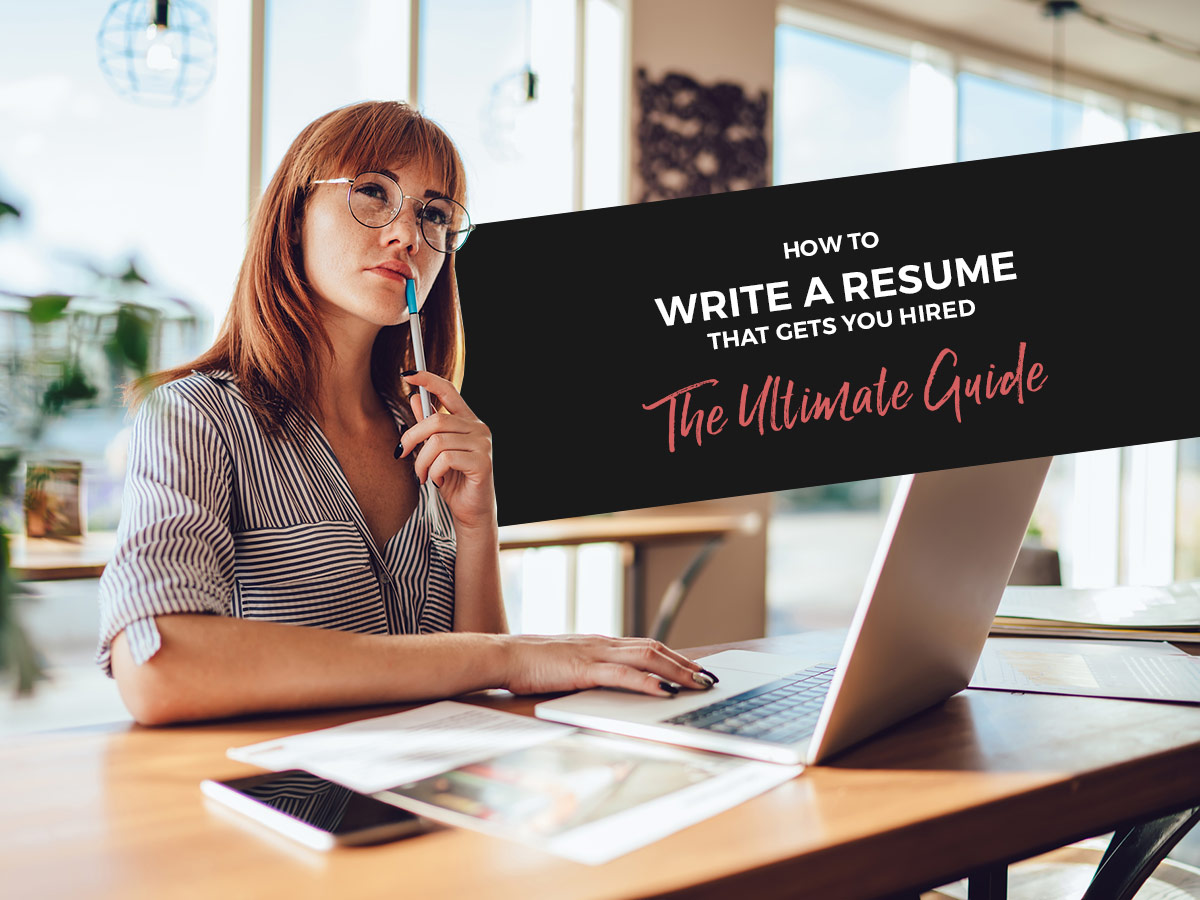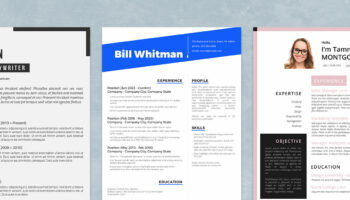New workforce entrants and tenured pros alike share one thing in common: Both feel stumped when it comes to resume writing.
Without a proper structure, resume writing gets stressful and chaotic.
This guide explains how to write a resume effectively with a repeatable framework. We cover
everything from resume format and layout to writing winning work experience entries and organizing your skills for a resume.
How to Write Resume Step-by-Step
Here’s how to write a resume in eight easy steps:
- Select the right type of resume format
- Create an effective resume layout
- Style a resume header area
- Add a resume summary or resume objective
- Organize your work experience and achievements
- Include your most marketable resume skills
- Format an education resume entry
- Consider optional resume sections
1. Select The Right Resume Format
The format of a resume is important because it is a professional document.
The three main resume formats are:
- Chronological resume provides a linear overview of your work experience from the most recent one to the oldest one. Studies show that hiring managers give preference to resumes in chronological format.
- Functional resume (also called a skills-based resume) places your skills and experiences in the highlight, rather than employment history.
- Combination resume features a larger featured skills area, followed by a chronological overview of your career history. It combined the previous two resume formats.
Learn more about different resume formats.
When To Use Chronological Resume Format
The chronological resume format works best for candidates with a strong career track record. You should also use it when applying for corporate jobs in traditional industries (e.g., education, finance, or government jobs) regardless of your career experiences.
- Pros: An “easy” and familiar read for any recruiter. Delivers a clear view of your career progression.
- Cons: Employment gaps and inconsistent career progression are more visible.
Browse winning chronological resume examples for different industries and professions.
When To Use Functional Resume Format
The functional resume format is a great choice for recent graduates, internship applicants, or those changing career fields.
- Pros: Emphasize your skills to draw attention away from your work history. Excellent choice for recent grads, and those who want to transition to another industry.
- Cons: Not all HR managers are fans. Some may be left wondering about your employment or lack of job details.
Read more about functional resume formatting and design.
When To Use Combination Resume Format
The combination resume format takes the better of two worlds and focuses on skills themes, accompanied by a linear overview of work history.
- Pros: Best for experienced workers with transferable skills, seeking positions in another industry. Again, it can help conceal some work gaps.
- Cons: Less familiar to a lot of recruiters. Some may want to just read about your work history.
Read more about combination resume formatting and design.
Alternatives: CV vs Resume vs. Portfolio
A job listing may also ask you to submit an alternative type of application document — a curriculum vitae (CV) and/or a portfolio.
CV vs Resume
In the US, the term CV is used to describe a longer, more formal version of a resume. It goes on for two or more pages (depending on how long you have been in the workforce) and provides the reader with more exhaustive information about your career goals, past achievements, educational credentials, and other accomplishments.
In most cases, CVs are organized chronologically and don’t require extensive customization for different job postings.
CV vs Resume Comparison
| CV | Resume | |
| Standard length | Two or more pages | One page |
| Job type | Academic and public sector | Any position |
| Key emphasis | Academic accomplishments and tenure | Skills and work experience |
| Format | Chronological | Chronological, functional, or combination |
| Customization | Optional | Obligatory |
Read more about the key differences between a resume and a CV.
Pro tip: Job hunting internationally? Mind that in the UK, Ireland, the EU, and New Zealand employers use the term “CV” in place of “resume”. In Australia and South Africa, file a resume when applying for a job in the private sector, and prepare a CV for a public service position.
Portfolio vs Resume
A portfolio is a curated collection of your work samples and other evidence proving your work experience and qualifications. The main goal of a portfolio is to attest your skills and talents, by giving a quick sneak peek of what you are capable of.
Portfolios are an absolute must-have for those in the creative industries – graphic design, copywriting, journalism, architecture, videography – and freelance/contract workers.
Portfolios are catching on in the IT niche as well for UX/UI designers, app/website developers, and coders.
For candidates with little-to-no work experience on their resume, a portfolio featuring a few leisure, college, or sample projects can serve as an excellent means for breaking into the desired industry. Yet, you don’t need to pile up a portfolio if your job assumes no tangible deliverables for review. As a marketing manager, for instance, you don’t need to create a portfolio of campaigns you have worked on. Instead, you can just list your main achievements in your resume.
2. Create an Effective Resume Layout
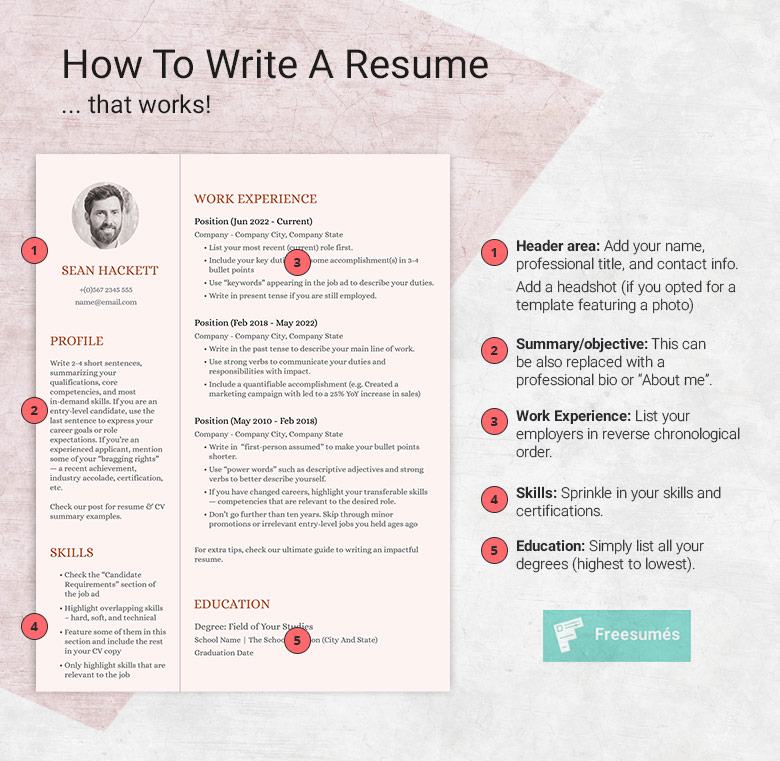
Effective resume layout includes the following sections:
- Header area with your contact information + headshot (optional).
- Professional title
- Resume summary or resume objective
- Skills and core competencies
- Education
- Work Experience
Optional resume sections:
- Hobbie
- Interests
- Languages
- Volunteering experience
- References
PRO TIP:
Given the average time a hiring manager spends reviewing a resume is six seconds before determining an immediate action, ensure the top one-third of your first page captures the reader’s attention. Highlight relevant strengths, skillsets, experience, and accolades to set the overall tone of your resume.

Claire Briggs
Career Consultant, CPCC, CPRW
Colorado, United States
Resume Design Tips: a Checklist
- Use plenty of white space, especially around the margins. A standard resume margin is 1 inch. You can adjust the margin to up to half an inch, but not else. Or else your resume will become unreadable.
- Try a two-column layout to fit in more information on one page (without making your resume look messy). To save on space, add icons instead of spelling out words like “email” or “phone”.
- Select a readable resume font. The best fonts for a resume are Arial, Calibri, Open Sans, Georgia, Times New Roman, and Verdana. Use a 12-point size or larger for the main texts.
- Separate sections with headings. Separate resume header area, work experience, and education section with headings. Select a 15-point or higher for headings/subheads.
- Use bullet points for work experience entries. Include up to five bullet points per work entry. Mix descriptions of duties and accomplishments. Align your content to the left to make it more skimmable.
- Apply styling to highlight the key information. Use bold, italics, Capitalization, and underlines to draw attention to different resume sections and important data points. But don’t overdo this.
- Write in the correct tense. Use present tense to describe your current position and past tense to talk about previous jobs. Write short, succinct sentences using first-person implied.
Pro tip: Don’t feel that design is your strong suit? Explore our jumbo-sized collection of professionally designed resume templates. Download one of our modern, creative, simple, or professional resume templates to get unstuck at the resume formatting stage.
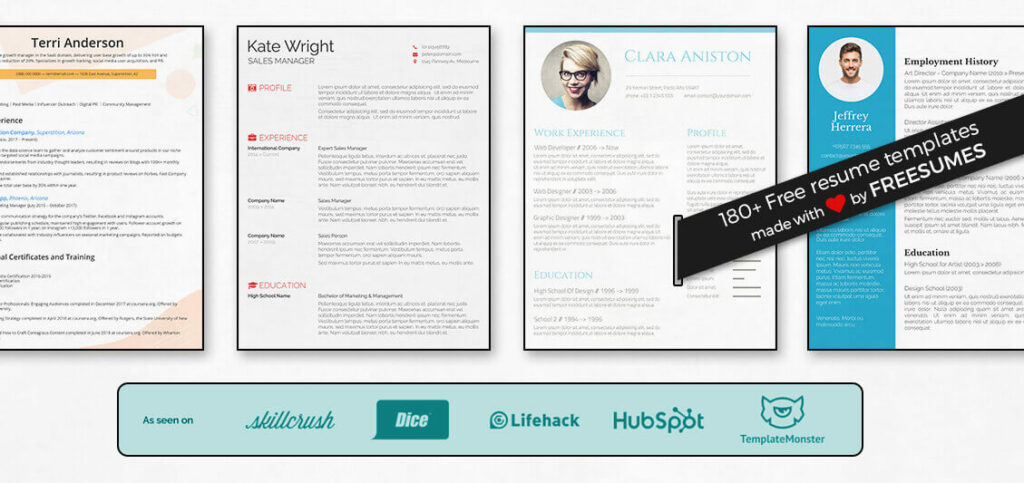
3. Style a Resume Header Section
Don’t waste an inch of that prime “real estate” atop your resume. The header section should feature the next elements:
- Full name and contact information
- Professional title
- Professional headshot
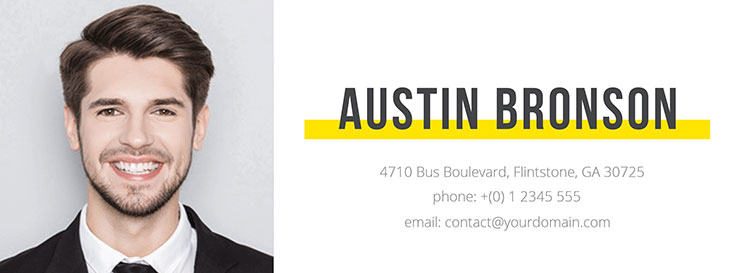
Based on the Contrast resume template
Contact Information To Include on a Resume
- Personal cell phone number
- Email address: make sure it’s a professional one, not something like katiy123@email.com
- LinkedIn Profile address
Optional Contact Information
- Full mailing address. Some employers still dispatch job offers and rejection letters by snail mail. Adding a postal address may also be necessary if you’re applying for a position in another city/state and what to indicate that you’d rather start with a phone interview.
- More social media links. Link other social media profiles only if you want to showcase your work e.g. link to a Behance portfolio as a designer or to Instagram as a photographer.
- Personal website/blog. Only include the URL if it contains relevant information, such as a portfolio, client or employer testimonials, or thought leadership content. If you run a personal blog about crocheting, an employer doesn’t need to know about this.
Personal Information to Omit
- Birthdate
- Marital status
- Nationality
- Religion
- Second email or phone number – these can lead to further confusion.
Professional Title for Resume
The best option is to use a short resume title. e.g., Senior Java Programmer or Retail Sales Manager.
If you are somewhat well-known in your industry and have an established online presence, it’s OK to make your title more brandable, e.g., “The Original Conversion Copywriter”.
Should I Add a Photo to a Resume?
The answer is — it depends. Some employers are against photos on a resume (and it’s often listed in the job posting) because they’re fearful of possible discrimination allegations. But the majority don’t mind resumes with photos. Most recruiters will go and check your LinkedIn profile anyway (which has to have a picture).
For startups and employers from the creative industry, it’s no longer unusual to ask for video resumes or quick self-introduction videos as part of their application process. But the “old guard” companies may not be that accepting of a photo resume. According to a Talent Inc survey, a resume headshot is considered a deal breaker by 28% of HR executives.
Ultimately, it’s your call whether to include a picture of yourself or not within a particular application.
4. Decide If You Want a Resume Summary or Resume Objective
The best resumes feature either a summary, an objective, or a personal statement in the header area, right after the contact details.
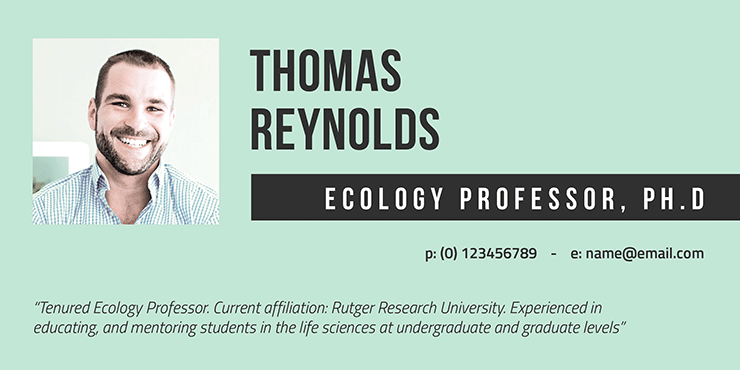
Based on The New Candidate resume template
Resume Objective
A resume objective statement outlines what you are seeking within a new role and what you can bring to the table. Typically, it’s 1-2 sentences long, taking a prominent place just under your header.
Sample resume objective
“Senior Data Scientists with 7 years of professional experience, eager to participate in a deep learning research project”
Review more resume objective examples in this guide.
That said, resume objectives are a bit of a bit out-fashioned. While it’s OK to use a resume objective when applying for internships or entry-level jobs, more experienced candidates use a resume summary instead.
Resume Summary
A resume summary statement shifts the focus on the company’s needs and serves as a “what I can do for your business” pitch from you as an applicant.
Sample resume summary:
“Hard-working, efficient, and detailed oriented Senior Sales manager. With 10 years in pharmaceutical sales, maintained and cultivated over 150 client relationships, generating over $1.5 million in new business for Acme Inc.”
A resume summary allows you to showcase your key competencies and most marketable skills atop your resume — exactly where most eyes land. A summary immediately establishes your credibility and entices the reader to review your entire resume.
A resume or career summary is your best bet when you have some great achievements, solid credentials, and a long track of successful projects.
If you’re making a skills-based resume, plan for a bigger resume summary that also outlines some of your work experience, highlights transferable skills, personal qualities, and achievements, plus indicates your desired career trajectory.
5. Add Work Experience To Your Resume
Work experience is the main “serving” of your resume. This section will occupy the most space on the page. But it doesn’t mean that it should be full of “fluff” and generic filler statements.
On the contrary – customize your resume depending on the position you are applying for, highlighting various skills, achievements, and job chores.
A resume work experience entry has to include
- Job Title. Put a title atop every new entry, styled as a bold heading. This way the reader can easily scan through all the titles in one glance.
- Company Name, City, State. List employer information right after the job title.
- Employment Dates. Add the year and month. If you are still employed by the first company, format the dates in the following manner: Jan 2023 – Current.
- Key Responsibilities. Use bullet points to briefly list your job duties. Don’t include every single thing you did on the job. Add chores that are the most relevant to the new position. Include up to 4 responsibilities per work entry.
- Main Achievements. Throw in some bragging rights that will show the potential employer how well you performed. You can back up a selected few responsibilities with an achievement statement or enlist one main achievement per job.
Sample work entry on a resume

How To List Achievements on a Resume
Employers aren’t just interested in your skills. They want to understand how you apply them at the workplace.
Your achievements serve as hard evidence of your core competencies and unique abilities to do the job better than others.
Unlike duties, accomplishments don’t describe the task you did. They speak of the end result.
Compare these two sample work entries for a customer service resume:
| Duty | Provided virtual receptionist and customer support services to a legal firm. |
| Accomplishment | Maintained a 93% CSAT score when the team average was 86%. |
When describing your accomplishments use strong verbs and power words. Both help articulate your contribution and make your writing more persuasive.
Read more about listing accomplishments on a resume.
How To Find And Use Keywords For Your Resume
Resume keywords are words and phrases employers use to describe the ideal candidate’s credentials.
Pay special attention to the qualification section – it has just the right keywords you need.
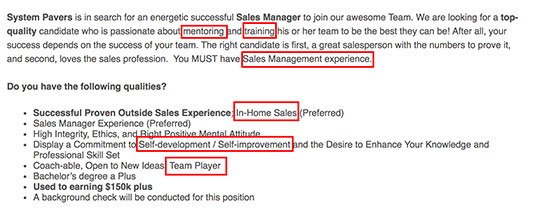
Include keywords in your work experience section. Doing so helps get by the applicant tracking system, designed to weed out candidates without relevant skill sets, and get immediate readers’ attention.
How To Explain Employment Gaps On Your Resume
Gaps in employment can cast unwarranted doubt on your ability to deliver great work. Even if your leave from the workforce was justified (e.g., due to starting a family), some recruiters might still be wary.
When it comes to dealing with employment gaps on your resume, you have three options:
- Conceal short-term employment gaps by only listing employment years (instead of a year plus a month). If you returned to the same position after an extended leave, you don’t have to bring up the gap.
- Address the employment gap in work experience entry. Include a one-sentence summary, explaining why your reasons for leave (e.g., pursuing grad education, taking a sabbatical, etc.).
- Use a functional resume format. In this case, you don’t have to list work experience entries chronologically and therefore draw extra attention to those gaps.
Read more about addressing employment gaps on a resume.
Struggling to organize all your career information?
Try our free resume builder.
Get a PDF resume copy in 6 easy steps.
6. List Your Most Marketable Resume Skills
Every candidate has a unique mix of hard and soft skills.
- Hard skills are specific and measurable abilities, you obtain on the job, through education, or training. Hard skills are often technical and/or specialized i.e., related to a specific field of work.
- Soft skills are interpersonal skills and personality attributes you acquire through both personal and professional experiences. Soft skills aren’t job-specific. Rather they indicate your ability to perform well in areas such as teamwork, problem-solving, and leadership among others.
Although hard skills may be seen as more important, that’s not the case. 92% of recruiters name soft skills as equally or more important to hire for than hard skills. Therefore, your resume and cover letter should showcase a good mix of both skills.
Hard Skills Examples for Resume
All hard skills fall into either of the two categories:
- Technical skills include the knowledge and abilities required to perform specific tasks or operate specific tools or technologies in a particular field. They can range from basic digital literacy to advanced engineering skills.
- Task-oriented skills denote your proficiency in performing certain duties. For example: “Technical website audit” is a task-oriented hard skill, while knowledge of Google Analytics is a great bonus technical skill.
Other examples of task-oriented skills include:
Soft Skills
Soft skills, also dubbed as “people skills” indicate your ability to build a positive rapport with others, effectively solve problems, and proactively manage other people’s (and yours) emotional responses.
Examples of soft skills include:
- Leadership skills
- Interpersonal skills
- Organizational skills
- Conceptual skills
- Critical thinking skills
- Self-management skills
PRO TIP:
Tailor your resume for each job posting. Take time to research the company and their culture to make sure it’s a mutual fit. Make sure your resume highlights how your skills and abilities will be an asset to the organization and the desired position.

Brenda S. Meyer
Certified Senior HR Consultant
Arizona, United States
Sample Skills for a Resume
- Competencies: SEO, Content Marketing, PPC, Email Marketing, Growth Hacking
- Tools: Google Analytics, Facebook Ad Manager, Amazon Ads, Ahrefs, Google Search Console, MOZ.
- Soft skills: result-oriented, analytical, creative thinker, great project manager, and a strong communicator.
- Competencies: tax audit, enterprise bookkeeping, accounts management, inventory management, risk assessments.
- Software: SAP ERP, QuickBooks, Advanced MS Excel user, Sage.
- Soft skills: detail-oriented, analytical, efficient, ability to work under pressure.
- Competencies: Phone support, live chat support, appointment management, customer retention, telemarketing.
- Software: ZenDesk, LiveChat, CRM, Support Center, Microsoft 360 Office.
- Soft skills: Tenacity, solid communication skills, articulate, results-oriented.
Checklist for Listing Skills on Resume
- Use the job entry to identify the main candidate’s qualifications. Compare how you stack against them. If you meet more than half of the requirements, don’t be shy to apply.
- Don’t over-stuff your application with keywords. Not every second word should be a keyword you have taken out of the job description or somewhere else.
- Customize your resume skills section to match every job listing. HRs have zero tolerance for generic applications.
- List your top skills in a resume summary to get the readers’ instant attention. Alternatively, try a resume template with a featured Skills section.
- Eliminate repetitive words or phrases. Different work entries should not sound the same, even if your duties didn’t differ much.
- Highlight a mix of soft and hard skills. Aim for a 75 to 25 ratio, where three-quarters of listed skills are hard and one-quarter — soft.
7. Format an Education Resume Entry
In a chronological resume, an education section goes right after work experience.
But if you’re a recent graduate, it’s best to place the education section before work experience. It will then compensate for the lack of hands-on work experience.
Here’s how to list education on a resume:
- List your highest degree first. Specify which type of degree you hold (e.g., Ph.D., MA, BS, BA, etc. Include your major. Add a minor only if it’s relevant to the position.
- Spell the name of your university/college. Include its location in City, State, and Country format.
- Include a graduation year. If you haven’t yet graduated, add an expected graduation date.
- Add all other degrees in reverse-chronological order using the same format.
Use a consistent format for all your education entries.
Sample education entry for resume

You can add extra information about your education if you like. For example:
Such information can help you stand out as an entry-level candidate. But its importance diminishes as you progress in your career.
Seasoned professionals should opt for a tighter education section and allocate extra space toward work experience and skills.
How To Put An Unfinished Degree On Your Resume
If you’re still in college or never actually made it to the graduation ceremony, it’s fine.
Research found that students who had at least “some college” are statistically more likely to be employed 15 years after high school graduation and earn more than those who never went to college. Employers too have grown open to candidates with non-traditional educational backgrounds.
Therefore, don’t leave your unfinished degree of the resume entirely.
Instead, format the education entry the following way:
- Name and location of the institution
- Years spent in college
- Degree type
- Number of hours completed
- Courses and/or examples completed
Sample Unfinished Degree Entry for a Resume
University of Denver (2020 – 2021)
Denver, CO
BS: Computer Science — Completed 48 Hours
Passed A+ Certification Examination
Check more examples of listing an unfinished degree on a resume.
How To List Certifications On a Resume
Certifications can prove that you are a more valuable and skilled candidate. So don’t be shy to list up relevant courses and license you have obtained.
These can go straight under your education section in reverse chronological order. Style them using the next format:
- Full name of Certification
- Name of Certifying Agency or Body
- Dates of Certification
- Location (If Applicable)
Sample certification entry for a resume
PRINCE2 Foundation & Practitioner Certification, PRINCE2, 2016
Be sure to list only relevant certifications when applying for a job. Being CPR certified is great, but that cert will not boost your chances of landing a job in Accounting. Though a CPA (certified public accountant) definitely will.
You may also be tempted to list e-courses from LinkedIn, Coursera, and other MOOCs in your resume. If those are very relevant to the application, go on and mention them. But if you took something like Phycology 101 course, keep that info to yourself.
8. Consider Optional Resume Sections
Still, have some space left on your resume? Then you can add a bit more information to personalize your resume.
Optional sections for a resume include:
- Languages
- Industry awards & accolades
- Hobbies and interests
- Volunteering experience
- References
Languages
Fluent in Chinese? Was raised bilingual? Awesome! That means you can bring more value to the employer, especially if you are applying to an international company. Briefly add the language you speak and your level of fluency at the bottom of your resume.
Sample languages entry for a resume:
- French: Certified C1 level (full working proficiency)
- Spanish: Certified B1 level (conversational fluency)
Pro tip: If you took two years of French in K12 and never practiced it after, better skip mentioning your proficiency to avoid any faux pas.
Hobbies & Interests
Every employer has a unique work culture. Some like hiring creative and playful candidates. others are looking for exceptional team players. Your hobbies like sports, arts, or other unusual activities can show employers that you are a “fit” for the current team.
Read more about when to include (or omit) hobbies from your resume.
Volunteering Experience
An increasing number of companies make “giving back” their company mission and want to hire employees who share their aspirations. 1 in 4 companies in the US is giving employees paid time off to volunteer.
Showing that you are a socially responsible citizen and have a deep care for certain causes can be another bonding point between you and the prospective employer.
Industry Awards & Accolades
Unless you have bragged about some top recognitions received earlier in your achievements section, do list them in a separate section at the bottom of your resume. These can include both internal company praise (e.g., top sales manager of Q4) and industry-wide awards e.g., #7 among Top 20 Social Media Marketers in 2018 according to Forbes.
If you hold awards, associated with your academic work, list these in the education section instead as a one-line mention.
References
Most companies no longer expect you to list references on a resume. Instead, you may be asked to share your former employee or mentor’s contact details during the later stages of the hiring process (e.g., after the first interview).
However, some employers in the academia, government, and public sectors, still favor references on a resume.
If the job listing specifically asks for those, you should create a separate reference page and send it together with your resume.
A resume reference page has to:
- Include a descriptive title (Reference)
- List the referee’s full name, position, and contact information
- Denote your relationship and/or affiliation with the person
Read more about including references on a resume.
TL: DRs Writing Your Resume
Your resume is a reflection of you. As such, it should be smart, confident, honest and open.
To write a resume faster, start with an outline, where you:
- Draft a professional header section with your name, professional title, and contact information.
- Create several resume summary versions, which highlight different types of competencies and skills.
- Keep a master list of your most-marketable hard skills and unique soft skills.
- Have a detailed work history, with each entry featuring the main duties and key achievements.
- List your all formal education and extra training, certifications, and licenses obtained
- Have optional resume entries for languages, hobbies, and volunteering experiences among other tidbits.
Once you have a solid resume outline, you can easily create a custom resume for every job posting by highlighting different skills, duties, and achievements.
And if you are struggling to make all your information look presentable enough and attractive, browse our free resume templates.
We are sure you will find the design you love among the 180+ templates listed. Once you make your pick, just download the template, open it in MS Word, and start adding your details using the tips mentioned above!
